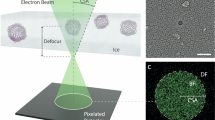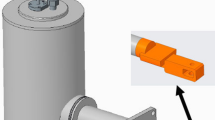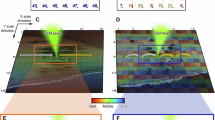Abstract
IN diffraction studies of biological membranes, X-ray diffraction has been used more frequently than electron diffraction in spite of certain advantages inherent in the latter technique. Electron diffraction enables the study of a small area (about 1 µm2) of a very thin specimen, and the collection of experimental data within a short time. Moreover, the morphology and degree of purity of the specimen can often be investigated. It seems possible to overcome the main problems arising from the application of the electron diffraction technique to biological materials, namely the difficulty of studying hydrated materials and the damage caused to the specimen by the electron beam, and a study of wet biological membranes has been reported1. In this investigation dry specimens have been studied. Radiation damage was largely overcome by using minimum beam current, by maximally overfocusing the first condenser of the electron microscope, and by moderately overfocusing the second condenser. To minimise the temperature rise of the specimen, caused by inellastically scattered electrons, a cooled specimen holder was used. To facilitate heat transport, the specimen grids were covered with aluminium instead of carbon. A Philips 301 G electron microscope equipped with an anti-contamination device was used and the diffraction patterns were recorded at 100 kV on a highly sensitive X-ray film, Kodirex. All diffractograms were recorded at a specimen holder temperature of about −60 °C, which was regarded as a fair estimate of the temperature of the specimen itself.
This is a preview of subscription content, access via your institution
Access options
Subscribe to this journal
Receive 51 print issues and online access
$199.00 per year
only $3.90 per issue
Buy this article
- Purchase on SpringerLink
- Instant access to full article PDF
Prices may be subject to local taxes which are calculated during checkout
Similar content being viewed by others
References
Hui, S. W., and Parsons, D. F., Sicence, 184, 77–78 (1974).
Razin, S., and Rottem, S., J. gen. Microbiol., 33, 459–470 (1963).
Engelman, D. M., J. molec. Biol., 58, 153–165 (1971).
Wells, M. A., and Dittmer, J. C., Biochemistry, 6, 1259–1263 (1963).
Bernengo, J. C., and Simpkins, H., Can. J. Biochem, 50, 1260–1266 (1972).
Luzzati, V., Biological Membranes (edit. by Chapman, D.), 71–123 (Academic, New York, 1968).
Author information
Authors and Affiliations
Rights and permissions
About this article
Cite this article
CARLEMALM, E., WIESLANDER, Å. Electron diffraction studies of biological membrane and lipids. Nature 254, 537–538 (1975). https://doi.org/10.1038/254537a0
Received:
Published:
Issue date:
DOI: https://doi.org/10.1038/254537a0



